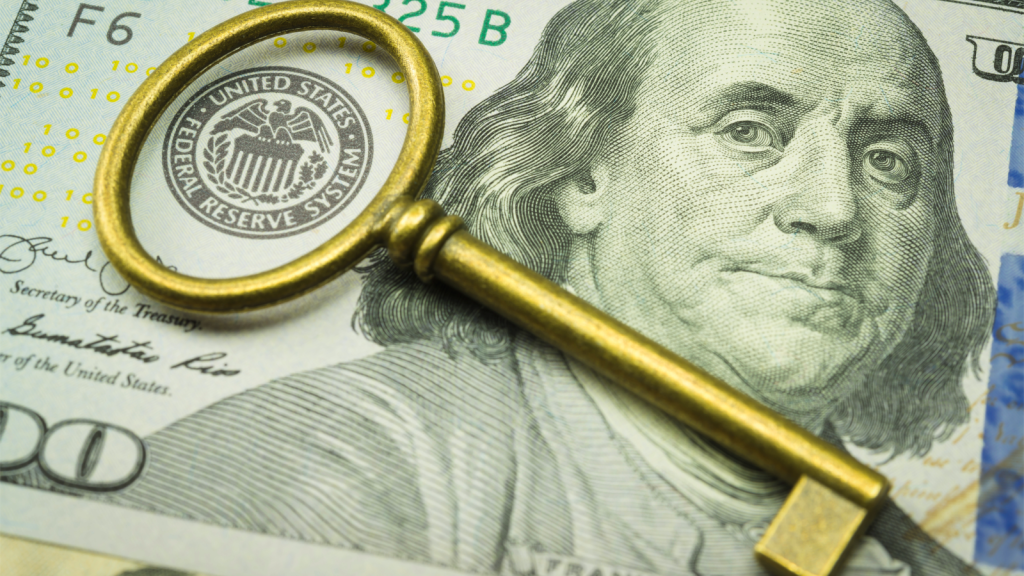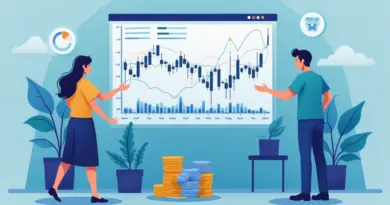Why the Fed Didn’t Cut Rates This Week – and What Happens Next
This week, the Federal Reserve did exactly what everyone was expecting: nothing.
After months of uncertainty, fueled by tariffs and growing global tensions, the Fed opted to keep key interest rates unchanged at the 4.25%–4.5% range.
Fed Chair Jerome Powell tried to sound firm. Talked about “tariff inflation.” Repeated the same lines about “elevated uncertainty.”
If you’ve been reading along with me for a while now, you know that I am on record saying the Fed is waiting for an “Inflation Bogeyman” that has yet to materialize.
But the reality is the real news wasn’t necessarily what Powell had to say after the meeting. It was in the Fed’s internal projections – or what we call the “dot plot”.
Now, there are 19 total members who are surveyed for the dot plot. And according to the latest reading, there are seven who don’t want any cut. But the majority of members do want to cut. In fact, the latest dot plot predicts two potential quarter-point rate cuts this year.
In short, the majority of the Fed is leaning toward cuts, and we’re starting to see some real signs of policy softening.
Now, these holdouts at the Fed are still uncertain. But the data doesn’t lie. And sooner or later, I expect them to come around.
So, now that some central bankers are starting to blink, let’s discuss a couple of reasons why I think the market has more room to run. Then, I’ll tell you about a little-known government fund that could trigger yet another leg higher and lead to massive gains for early investors.
Reason No. 1: The Data Doesn’t Lie
You may recall that last week’s reports showed obvious signs that inflation data has started to cool. Here’s a brief recap :
- May’s Consumer Price Index (CPI) rose just 2.4% year over year, slightly below April’s 2.3%
- Core CPI climbed 2.8%
- The Producer Price Index (PPI) and core PPI both increased 0.1% in May
Retail sales fell for the second straight month – the first time that’s happened since 2023:
- Building materials and garden store sales dropped 2.7%
- Gas station sales fell 2%, mainly due to cheaper fuel
- Vehicle sales slid 3.5%
But the biggest surprise to me was that sales at bars and restaurants declined 0.9%. That’s after they rose 1.2% in the previous month. What this tells me is that despite cheaper gas prices, consumers were more cautious – they didn’t go out to eat and drink with their savings.
Even more troubling: Housing starts fell to their lowest level in five years.
Housing is a cornerstone of the U.S. economy. This kind of drop doesn’t happen unless rate pressure is crushing demand.
Meanwhile, Treasury yields continued to fall after the Fed’s official statement, which is good. I keep saying that the Fed cannot fight market rates much longer, because a global interest rate collapse is still ongoing. Central banks all over the world are slashing rates to combat slowing growth.
So, the Fed will have to follow suit sooner or later.
Reason No. 2: The Russell Realignment Is About to Trigger Buying Pressure
Every June, the Russell indices perform their annual realignment by adding and deleting stocks based on the current market environment. The realignment takes the entire month of June, with the preliminary add/delete lists released every Friday, starting with May 30, then June 6, June 13 and June 20.
These proposed changes to the Russell 1000 and Russell 2000 are then fine-tuned throughout the month. A stock’s eligibility is determined based on company size, structure, share type, exchange and several other factors. Those companies that meet the grade are then ranked, with the largest 1,000 becoming members of the Russell 1000, and the next 2,000 members of the Russell 2000.
Naturally, the stocks that are added to both the Russell 1000 and 2000 indices benefit from index accumulation and forced institutional buying pressure.
The final lists will be announced on Friday, June 27. All of the stocks added during the annual Russell Reconstitution will begin trading on the Russell indices on Monday, June 30 – and many of these stocks will “pop” that Monday.
Interestingly, the preliminary lists also tend to ignite stocks that will potentially be added to the Russell indices.
It’s Up, Up and Away From Here
Now, the Fed’s caution is starting to show some cracks. Hopefully, we’ll get a cut soon, which will pour gasoline on the fire, and the market will soar.
Yes, there are a lot of crosscurrents in the market. For example, if you hold gold, energy or defense stocks, you’ve likely noticed they’re outperforming in this environment.
But the bottom line is that I’m confident that to will continue to meander higher in the meantime.
These are exactly the types of positions we want to be in heading right now.
In the meantime, next week all eyes will be on Congress and the “big, beautiful bill”. They’re trying to reconcile the House and Senate versions of a spending bill before lawmakers leave town for the July 4 recess. The SALT deduction is the sticking point – they’ll likely raise the cap, though whether it hits $40,000 is still up for debate.
If that passes, then I expect it to provide a boost as the market regains certainty, and folks feel confident about more tax dollars back in their pocket.
Bottom line: It’s only up, up and away from here.
This Government-Backed Wealth Wave Is Just Getting Started
Beneath all the headlines, one of the biggest stock market catalysts in a generation is quietly unfolding.
Thanks to Executive Order 14196, a forgotten corner of the market is about to receive billions in fast-tracked federal support. Most investors have no idea this is happening – but the money is already lining up.
I’ve just released a briefing that covers:
- What this executive order does
- Why it matters now
- And the three stocks I believe are positioned to benefit the most
Click here to access the full story.
Sincerely,

Louis Navellier
Editor, Market 360
P.S. Don’t forget… next Wednesday is when our corporate partners over at TradeSmith unveil their breakthrough TradeSmith GPT software. CEO Keith Kaplan will host a free broadcast, and if you register now, you will receive access to a “lite” version of the system so you can try it out yourself. Sign up for free here.
The post Why the Fed Didn’t Cut Rates This Week – and What Happens Next appeared first on InvestorPlace.






